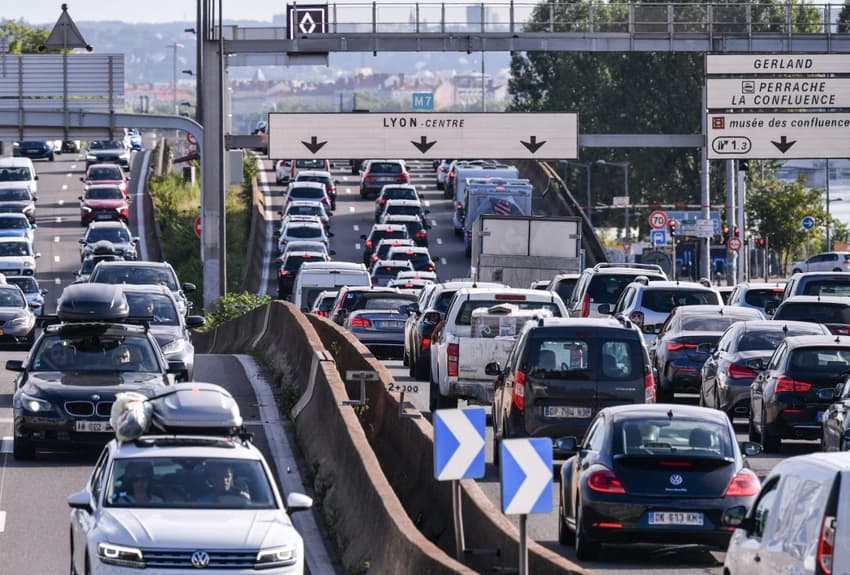Traffic warnings for France ahead of holiday weekend

This weekend represents the first chance to 'faire le pont' and have a long holiday weekend - and the French seem set to make the most of it with warnings of extremely heavy traffic from Wednesday.
Thursday, May 26th marks the Christian festival of Ascension and is a public holiday in France.
More importantly, it's the first time this year that French workers have had the opportunity to faire le pont (do the bridge) and create a long weekend.
In France, most public holidays fall on different days each year and if they happen to fall on the weekend then there are no extra days off work.
This year that happened on New Year's Day (a Saturday) and both of the early May public holidays (the workers' holiday on May 1st and VE Day on May 8th, which both fell on a Sunday).
READ ALSO Why 2022 is a bad year for public holidays
But as Ascension is on a Thursday, workers have the option to take a day of annual leave on Friday and therefore create a nice four-day weekend.
And it appears that many are planning on doing just that, as the traffic forecaster Bison futé is predicting extremely heavy traffic from Wednesday evening, as people prepare to make their after-work getaway and head to the coast, the countryside or the mountains to fully profit from their holiday weekend.
According to Bison futé maps, the whole country is coloured red - very heavy traffic - on both Wednesday and Thursday as people take to the roads to leave the cities.

Map: Bison futé
Meanwhile Sunday is coloured black - the highest level, meaning extremely heavy traffic and difficult driving conditions - across the whole country.

Map: Bison futé
If you were hoping to take the train instead you might be out of luck, SNCF reports that most TGV services are sold out for over the holiday weekend.
Comments
See Also
Thursday, May 26th marks the Christian festival of Ascension and is a public holiday in France.
More importantly, it's the first time this year that French workers have had the opportunity to faire le pont (do the bridge) and create a long weekend.
In France, most public holidays fall on different days each year and if they happen to fall on the weekend then there are no extra days off work.
This year that happened on New Year's Day (a Saturday) and both of the early May public holidays (the workers' holiday on May 1st and VE Day on May 8th, which both fell on a Sunday).
READ ALSO Why 2022 is a bad year for public holidays
But as Ascension is on a Thursday, workers have the option to take a day of annual leave on Friday and therefore create a nice four-day weekend.
And it appears that many are planning on doing just that, as the traffic forecaster Bison futé is predicting extremely heavy traffic from Wednesday evening, as people prepare to make their after-work getaway and head to the coast, the countryside or the mountains to fully profit from their holiday weekend.
According to Bison futé maps, the whole country is coloured red - very heavy traffic - on both Wednesday and Thursday as people take to the roads to leave the cities.

Meanwhile Sunday is coloured black - the highest level, meaning extremely heavy traffic and difficult driving conditions - across the whole country.

If you were hoping to take the train instead you might be out of luck, SNCF reports that most TGV services are sold out for over the holiday weekend.
Join the conversation in our comments section below. Share your own views and experience and if you have a question or suggestion for our journalists then email us at [email protected].
Please keep comments civil, constructive and on topic – and make sure to read our terms of use before getting involved.
Please log in here to leave a comment.